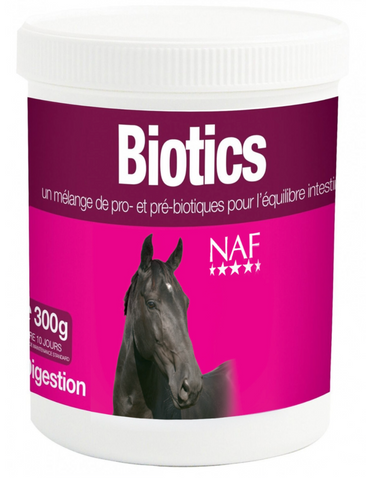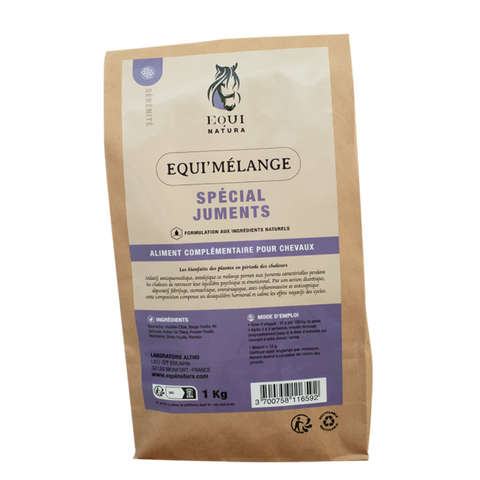The whole family: the broodmare
Heat :
From spring, the mare, in principle, goes into heat every 21 days. When the cycle starts again after winter, it may be irregular at first. Often the first heat waves are not the most fertile, but rather the most disturbing.
The duration and intensity of heat may vary depending on the mare. Some are in heat for a short time and barely show it, others, on the other hand, show such marked heat that they become annoying and difficult to ride (pissing mares). If your mare has this problem, you can give her Equi'mixture Special-mares from February/March.
Variations in biological and natural circumstances are not the only causes of disorders in the mare, there are many others. A bacteriological analysis can sometimes provide the solution but the hormonal balance can also be disturbed. In both cases, you absolutely must consult a veterinarian. Heat problems can also be caused by poor physical condition. In certain cases, we will observe irregularities in the appearance or progress of heat in mares who are in the stable too much, who are alone or who have nutritional deficiencies, in short, who 'feel bad about themselves'. Take her out in the meadow often, preferably accompanied.
Feed your mare well, without excess. Body condition (too thin, too fat) has a lot of influence on fertility. Above all, do not make her lose weight when she is mated.
Gestation :
During the first eight months of gestation a mare can be fed like a horse doing light work, without excess, she must be in normal condition and must not gain weight during the first three months of gestation. Many owners tend to overfeed their broodmares: the ribs should not be visible, but on the other hand, they must remain palpable.
It is during the last three months of gestation that the foal grows the most. During this period, the mare must be given an additional supply of calcium, phosphorus, vitamins (A and D3, E), minerals (calcium, phosphorus, copper, zinc, manganese) and high quality proteins. To the extent that the volume occupied by the foal increases, we will multiply the number of meals by reducing their volume and we will reduce the proportion of coarse food (hay). The mare must then receive a diet containing approximately 16% protein.
In the last month, drainage of the liver and kidneys, Equi'drink Drainage , combined with a course of Biotics to balance the intestinal flora can only be beneficial.
Biotics visibly has a positive influence on childbirth and the quality of milk, you can even administer it in the last month before childbirth and the first two months of lactation.
Preferably, avoid moving the mare during the last month of her pregnancy. It will produce antibodies against disease germs present in its environment, which the newborn will benefit from immediately upon birth, thanks to its mother's milk.
Little tip: when the mare gives birth in the box, place bales of straw along the walls; if she lies down awkwardly, she cannot crush her foal against the wall and you can, if necessary, create space for yourself in this way.
Lactation:
After childbirth, the need for additional intake is further increased due to milk production which requires a lot of energy and protein. After the birth of her foal, the mare gives, on average for the first three months, 10 to 18 liters of milk per day, depending on her breed and size. Then milk production decreases. The increase in the ration will be gradual until reaching ad libitum feeding, preferably using a balanced diet adapted to the lactating mare. It is advisable to carefully observe the physical condition because, during this period, the mare must neither gain weight nor lose weight.



